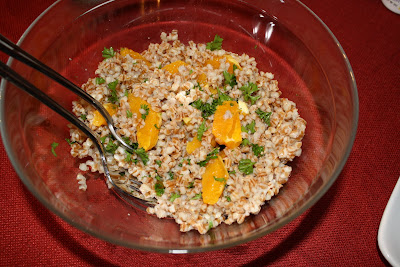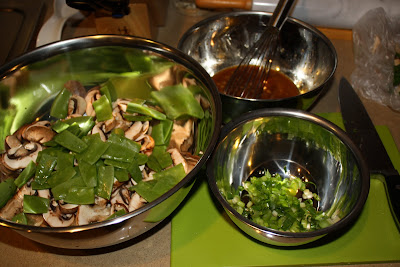 Sprinkles
Sprinkles is generally acknowledged to be the first cupcake bakery, the one that started it all (I’ve never been to any of their locations, but judging by their website, they do have beautiful and delicious-looking cupcakes!). I found their recipe for strawberry cupcakes on
the Martha Stewart website and decided to make it. I used frozen strawberries, and a 1-lb bag was plenty. These cupcakes were fantastic: not too sweet, very fruity and quite pretty. I’ll have to start using a piping bag for the frosting at some point, but that’s just a detail. The lactose-free frosting was great, too.
For the cupcakes
2/3 cup whole fresh strawberries (or frozen, thawed)
1 ½ cups all-purpose flour, sifted
1 tsp baking powder
½ tsp baking soda
¼ tsp salt
¼ cup whole lactose-free milk, room temperature
1 tsp pure vanilla extract
½ cup (1 stick) unsalted butter, room temperature (or cold margarine)
1 cup sugar
1 large egg, room temperature
2 large egg whites, room temperature
For the frosting
½ cup whole frozen strawberries, thawed
1 cup (2 sticks) unsalted butter, firm and slightly cold (or cold margarine)
1 pinch of salt
3 ½ cups confectioners' sugar, sifted
½ tsp pure vanilla extract
For the cupcakes
Preheat oven to 350 °F. Line a 12-cup muffin tin with cupcake liners; set aside.
Place strawberries in a small food processor; process until puréed. You should have about 1/3 cup of purée (add a few more strawberries if necessary or save any extra purée for frosting); set aside.
In a medium bowl, whisk together flour, baking powder, baking soda and salt; set aside. In a small bowl, mix together milk, vanilla, and strawberry purée; set aside.
In the bowl of an electric mixer fitted with the paddle attachment, cream butter on medium-high speed, until light and fluffy. Gradually add sugar and continue to beat until well combined and fluffy. Reduce the mixer speed to medium and slowly add egg and egg whites until just blended.

With the mixer on low, slowly add half the flour mixture; mix until just blended. Add the milk mixture; mix until just blended. Slowly add remaining flour mixture, scraping down sides of the bowl with a spatula, as necessary, until just blended.


Divide batter evenly among prepared muffin cups. Transfer muffin tin to oven and bake until tops are just dry to the touch, 22 to 25 minutes. Transfer muffin tin to a wire rack and let cupcakes cool completely in tin before frosting.

 For the frosting
For the frosting
Place strawberries in the bowl of a small food processor; process until puréed. In the bowl of an electric mixer fitted with the paddle attachment, beat together butter and salt on medium speed until light and fluffy. Reduce mixer speed and slowly add confectioners' sugar; beat until well combined. Add vanilla and 3 Tbsp strawberry purée (save any remaining strawberry purée for another use); mix until just blended. Do not overmix or frosting will incorporate too much air. Frosting consistency should be dense and creamy, like ice cream.





















































